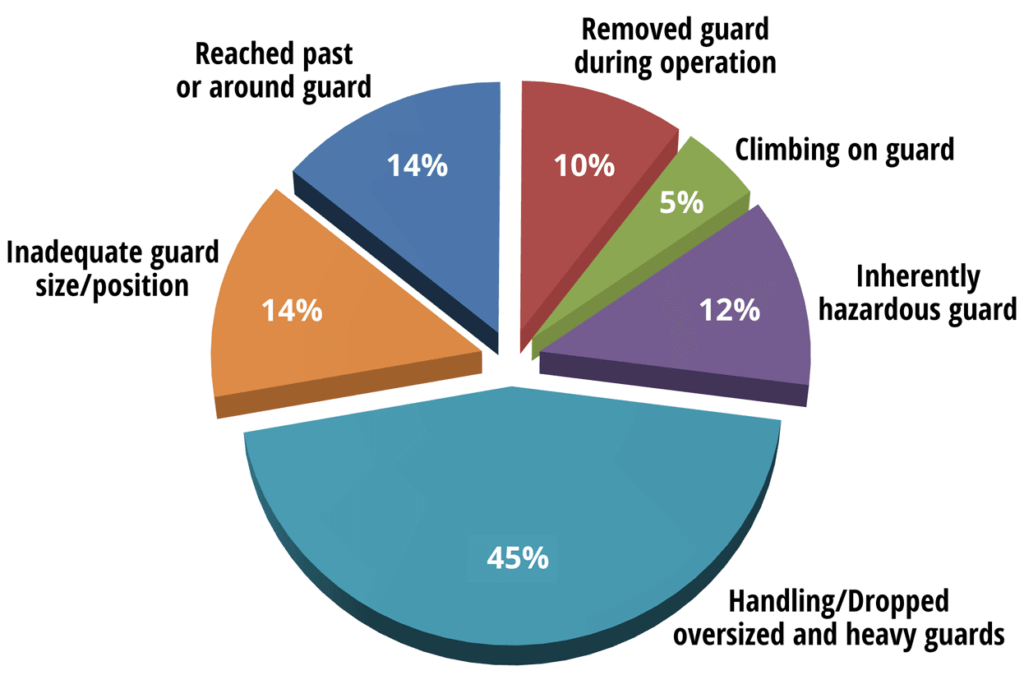According to the most recent data from the Mine Safety and Health Administration (MSHA), many injuries occur from handling oversized equipment guarding. When guarding new or existing machines, it is important to keep this data in mind.
1. Handling/Dropped Oversized and Heavy Guards: 45%
Large guards manufactured from steel can become very heavy. An alternate material should be considered. Thermoformed plastic machine guards almost always weigh a fraction of metal guards, greatly reducing the number of injuries from handling the guard.
A guard used in point guarding can be oversized for its application creating an additional hazard. Ensuring the guard is the proper size for your application is critical. Contact the guard manufacturer to ensure a proper fit for the guard.
2. Inadequate Guard Size/Position: 14%
Consulting with a specialist on machine guarding is a helpful way to make sure your equipment guarding is properly sized. Many guarding manufacturers can complete surveys, make suggestions, and also provide a properly fitting guard. Allowing the guard manufacturer to discuss the best possible way that parts will fit may be the safest route. Alternatively, independent firms can complete safety surveys and make suggestions.
Many safety companies can provide a “Gotcha Stick”, which indicates the width of allowed gaps between the rotating or moving components to be guarded and the guard.
3. Reached Past or Around Guard: 14%
Using a back plate completely encloses moving components and can prevent reaching around or past the guard. A back plate can prevent fingers, loose clothing, hair, etc. from entering the guarded area. It may be necessary to design a point guard system to allow normal maintenance procedures, such as checking oil and hydraulic fluids, to be performed safely around moving equipment.
4. Inherently Dangerous Guard: 12%
Any guard that does not conform to the current ANSI B11.19-2010 standards needs to be updated immediately. Discuss the specific application with a guarding specialist to ensure that any guard does not add additional hazards to the location.
5. Removed Guard During Operation: 10%
A properly installed guard is not a safety issue. Guards should be installed in a fashion so that unintentional removal is not possible. For additional information on machine guard fasteners that meet the ANSI B11.19-2010 standards, refer to the Explanatory Information E7.2.6. Continuous training should be performed to instruct employees concerning guarding practices.
Depending on the application, it may be necessary to use an interlocked guard. Discuss this option with your safety supervisor and equipment manufacturer if an interlocked guard is required.
6. Climbing on Guard: 5%
Employees should also be reminded during safety meetings regarding the proper installation and care for equipment guarding. Guards are meant to protect the employees from the moving components, and are not to be used as steps under any circumstances.

